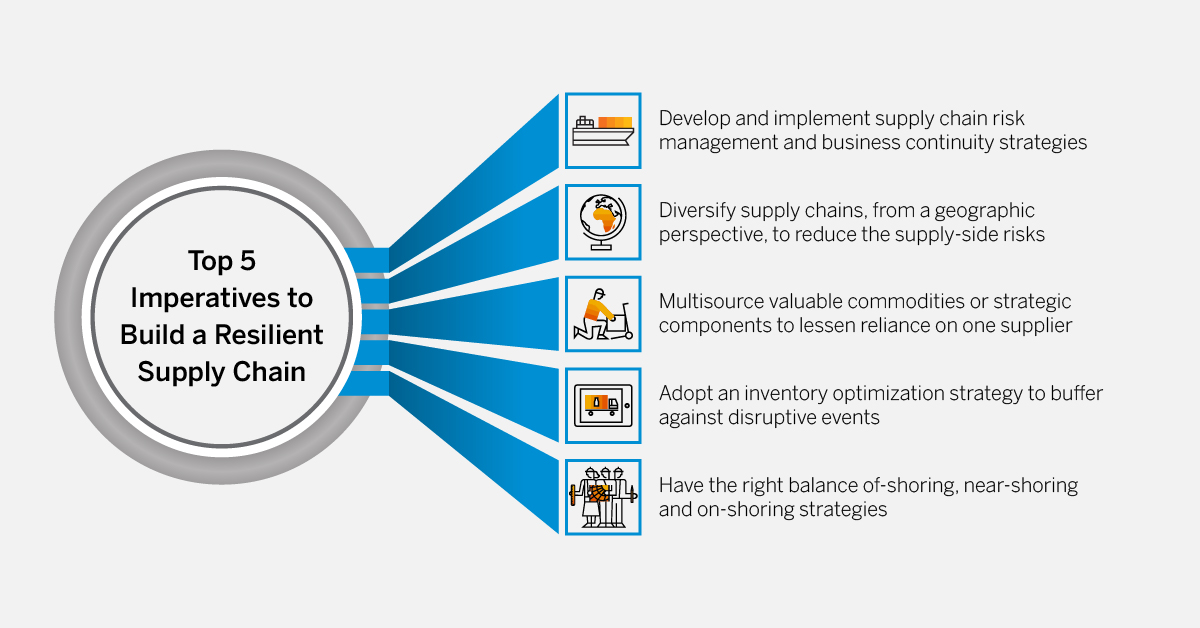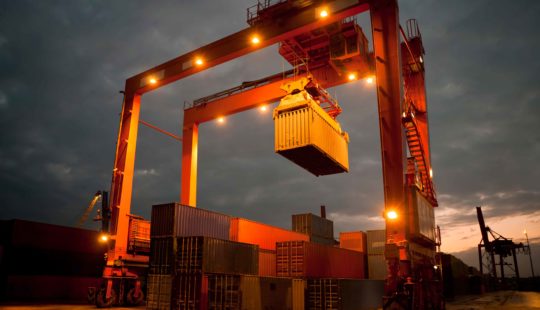In 2021, the United States Government introduced an “Executive Order on America’s Supply Chain” highlighting the need for a “resilient, diverse, and secure supply chain to ensure our economic prosperity and national security.” The executive order also discussed the future risk of “pandemics and other biological threats, cyber-attacks, climate shocks and extreme weather events, terrorist attacks, geopolitical and economic competition, and other conditions” and how these factors “reduce critical manufacturing capacity and the availability and integrity of critical goods, products, and services.”
The past 12 months highlighted flaws in many supply chains that have been “leaned out” and stretched to reduce costs. As a result, the pandemic made supply chain management processes the center of attention in presidential briefings, corporate boardrooms and even my family dining table.
Clearly, this executive order proves supply chains are a strategic topic.
What is a Resilient Supply Chain?
Resilient supply chains have a level of agility and responsiveness required to sense, predict, and respond to change during intense turbulence. We have long talked about the importance of visibility, agility, and resiliency”, but not until now have they become the top priorities in an increasingly disruptive world.
So what are some examples of what is being done and what is needed?
Visibility through all tiers of your business network
In a global and complex supply chain, the need for visibility is critical. As all times, and especially in a crisis you need to be able to see:
- Which suppliers are at risk?
- What are my alternate sources of supply for key resources?
- Where is my inventory?
- Are all shipments on time?
- Where are there demand spikes and of which products?
Agility to sense, predict and respond to change
Once you have identified a risk or opportunity, you have to assess the best course of action and act in short order. Examples include:
- Identify and switch to alternate suppliers
- Collaborate across companies and departments to design anywhere and build anywhere
- Adjust manufacturing to respond to changing demand
- Redirect shipments in transit
Resiliency to Minimize and Mitigate Risk
It is also critical to design your supply chain to withstand disruptions and respond to business opportunities. This requires having processes and plans in place to:
- Develop and implement supply chain risk management and business continuity strategies
- Diversify supply chains, from a geographic perspective, to reduce the supply-side risks of a single country or region
- Multisource valuable commodities or strategic components to lessen reliance on one supplier
- Adopt an inventory optimization strategy across the business network to buffer against disruptive events
- Balance of-shoring, near-shoring and on-shoring strategy

Without a doubt, unexpected disruptions will continue to occur. The cause of disruption will vary depending on the event, such as pandemics, geopolitical or trade conflicts, natural disasters, or limited natural resources availability.
Now more than ever, supply chains need to be resilient and agile to survive in the current global environment, while demonstrating the predictive intelligence and visibility to thrive in the new normal.
As the executive order highlights, “more resilient supply chains are secure and diverse — facilitating greater domestic production, a range of supply, built-in redundancies, adequate stockpiles, safe and secure digital networks”.
It also highlights the importance of collaboration across your network of partners, saying, “close cooperation on resilient supply chains with allies and partners who share our values will foster collective economic and national security and strengthen the capacity to respond to international disasters and emergencies”.
At the end of the day, supply chain executives must be able to make informed decisions confidently, quickly, and accurately, through a transparent value chain that senses, predicts, and responds to global dynamics.
To learn more about how supply chain leaders minimize risk and maximize opportunities with resilient supply chains, download a recent Oxford Economics study.



